My dad had a collection of old 78rpm records and some LPs of jazz music from the 1920s and 1930s. When I was a child he would put these on when my grandparents visited as they liked the music. I was fascinated by the process of playing a 78 - you had to change to a special pickup needle - and was amazed at how fast the records spun. (Note to self - I have more in common with a dog fascinated by a washing machine than I realise).
I sometimes like listening to this music today, as it brings back cosy memories of my childhood and grandparents visiting.
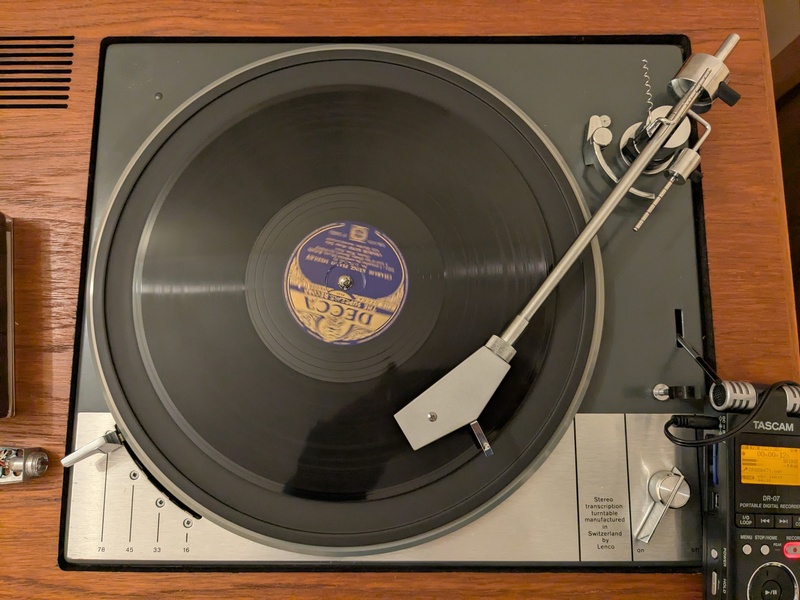 Photo: Lenco GL75 turntable playing a 78 record with a Tascam digital audio recorder. I love the 60s teak wooden case.
Photo: Lenco GL75 turntable playing a 78 record with a Tascam digital audio recorder. I love the 60s teak wooden case.
I don't have any records of my own but I thought it would be good to get his old record player going again and to make an internet radio station that my mum can listen to using her iPad.
Servicing the 53 year old record player
The record turntable is a Lenco GL75, which came as part of a Goodmans Module 80 system, which had a tuner and amplifier built in - I think this was purchased in 1972. Goodmans is sneered at today by HiFi afficionados, but I think it sounds great - especially when played through the matching Goodmans Magister speakers, with their giant 15" drivers.
It turns out I'm lucky that this turntable has an enthuastic following today, and the Lenco Heaven forum is full of guides for getting these old machines up and running again.
First step was to try the machine, but the platter was a bit reluctant to turn.
The forum suggested lifting the platter and tapping it with a hammer to free it. I was never allowed to touch this thing as a child in case I damaged it - so my first act of hitting it with a hammer felt…difficult.
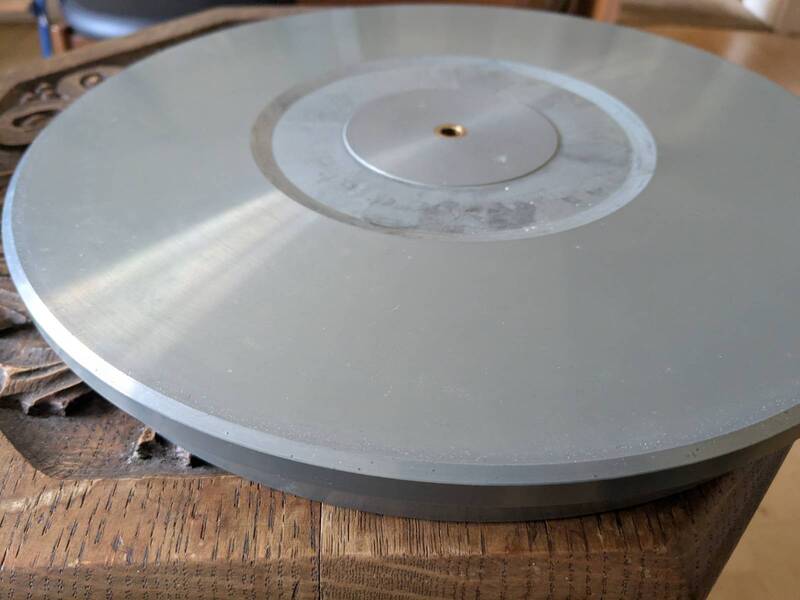 Photo: The Lenco GL75 platter. A nice, heavy, diecast thing.
Photo: The Lenco GL75 platter. A nice, heavy, diecast thing.
The Lenco heaven guides were really useful - first step was to Fix the platter bearing. I rinsed the old oil out using WD40 and replaced it with new oil which was in an oil can. After testing there was still a bit of noise from the bearing; I added more oil by pouring around the spindle/felt washer and this cured it.
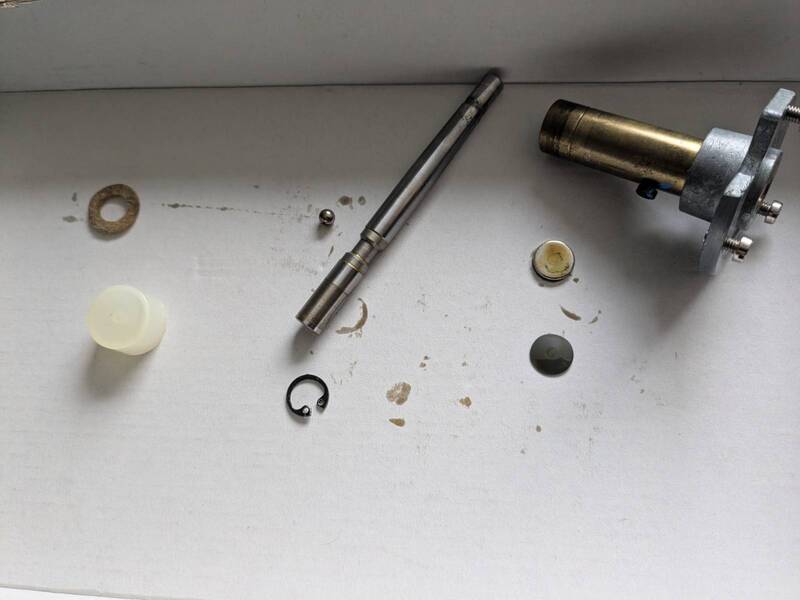
Photo: A Lenco L75 platter bearing, with spindle, circlip and ball bearing.
Next was to Lubricate the motor.
The V-blocks are rubber blocks that hold the tonearm in place.
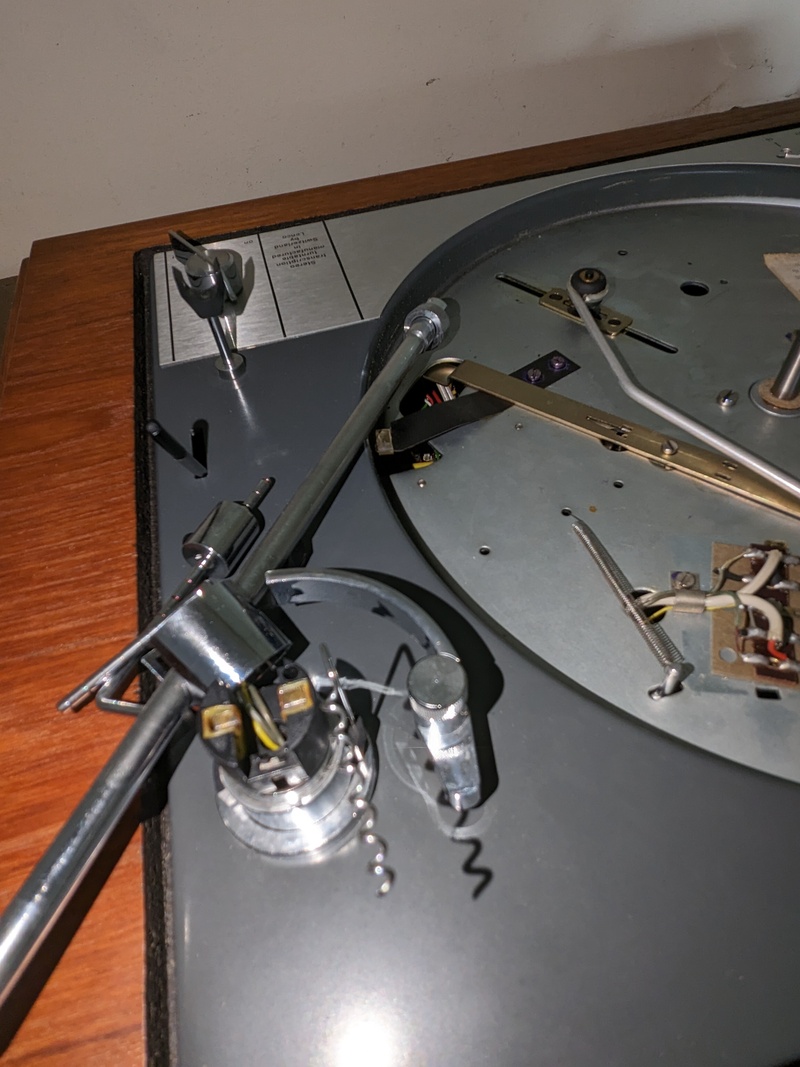 Photo: A Lenco GL75 turntable with the tone-arm removed, showing yellow "V-blocks" holding the arm in place.
Photo: A Lenco GL75 turntable with the tone-arm removed, showing yellow "V-blocks" holding the arm in place.
These had turned yellow and brick hard, and took a while to chip out. Fortunately I was gifted a new pair from a friend who had repaired their Lenco turntable. I was worried I'd get the old and the new pair mixed up - there was no risk of this as one was crusty, yellow and hard; the other pair were flexible, white and bright.
The idler wheel was hard round the edge too. Replacement wheels are available, but expensive. I made a DIY "not very good" lathe by putting the idler wheel in an electric drill and briefly touched sandpaper onto it. This seemed to reveal softer rubber underneath - I figured it was worth a try and it seems serviceable (but not perfect).
With the turntable put together I used the "RPM" app for Android to check the speed. This measured WOW of +/- 0.18%. I believe the turntable is supposed to be far better than this, so I think I need to do further investigation and work. However - the turntable is back together and working, and this will be good enough for the old records.
Fixing the electronics
There was no sound from the record player - it was pretty dead. Time for some investigation:
- The main fuses had blown. This was caused by the main power supply smoothing (filter) capacitors being shorted. These were replaced.
- The output transistors on one channel of the amplifier were open circuit. These were replaced with a modern equivalent; this required rewiring a bit as the pinout wasn't compatible.
- The notorious RIFA suppression capacitors were replaced.
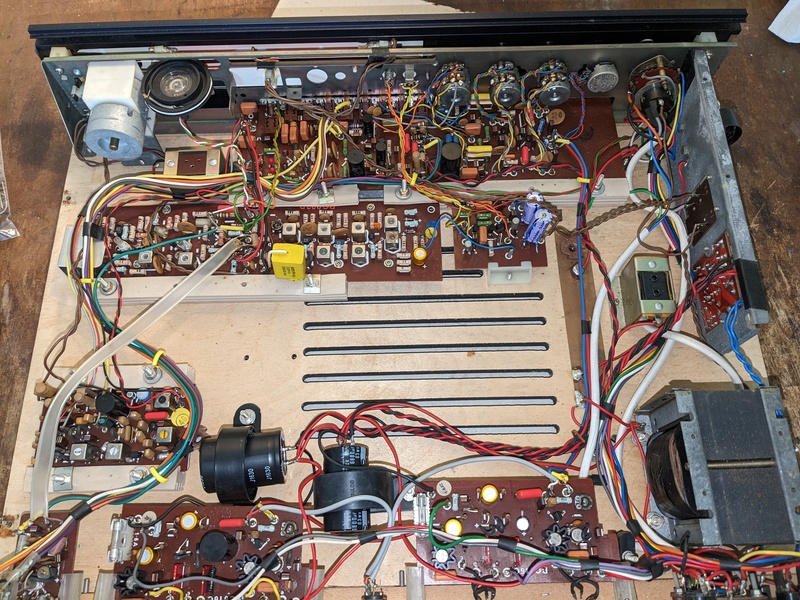 Photo: The inside of a Goodmans module 80 tuner/amplifier.
Photo: The inside of a Goodmans module 80 tuner/amplifier.
Things were made rather differently then. I can't believe how many soldered joints and how much labour it must have taken to assemble this, and cut the wooden chassis. The new capacitors look tiny in their holders compared to the original ones. The internet seems to think the black "Callens" capacitors should also be replaced; that can be a task for another time.
Notes:
- The amplifier is positive earth, which made the circuit diagram initially a bit confusing as it looked "upside down". This is contrast to today's "negative earth" convention.
- The circuit design looked quite similar to some of the older valve amplifiers. I got the feel the designers were brought up in this age, and were finding their feet with the new fangled transistors.
- For some reason the Lenco motor is wired as 110v, stepped down from 230v by the mains transformer. I'm not sure why they did this, but thought it was noteworthy. If anyone decides to re-use the turntable outside the Goodmans make sure you write the motor for your local mains voltage!
It now works!
It's nice to have this old thing "back on the road". I think there might be a bit of distortion in the amplifier still, which I will have to investigate, but it's good enough for now for playing 78s.
With all working, next step was to record the records